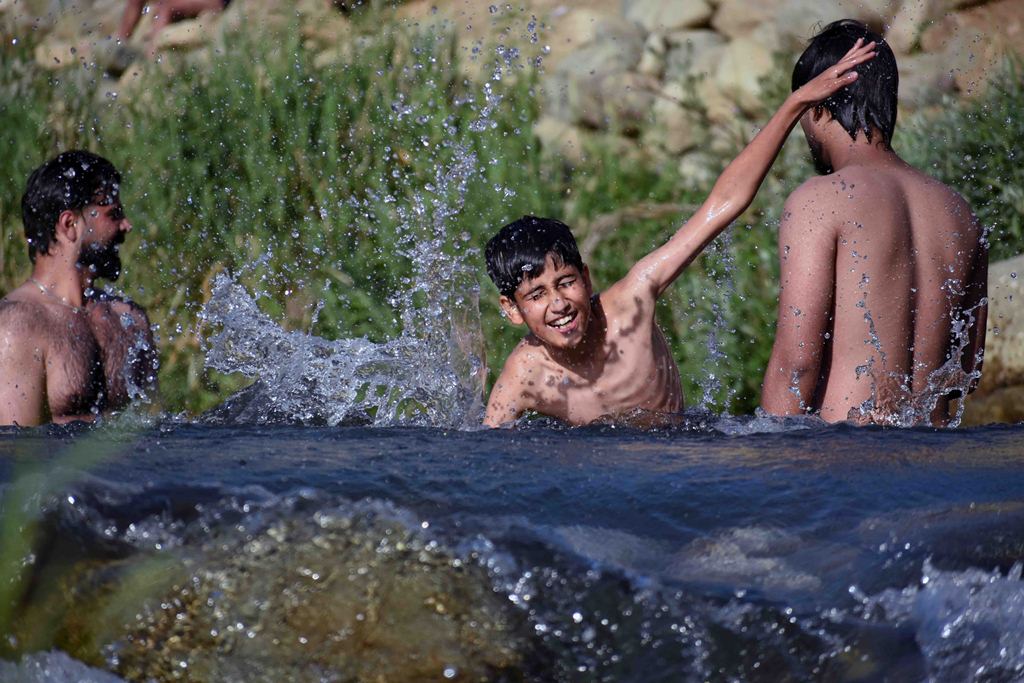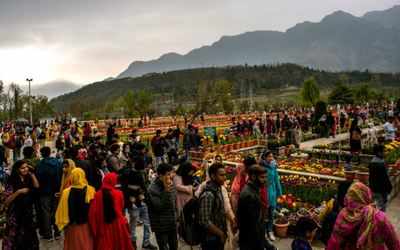As the Kashmir Valley reels under an unforgiving heatwave, climate extremes push historic boundaries, sparking widespread concern for health, agriculture, and infrastructure.
By: Javid Amin | Srinagar | 07 July 2025
The Kashmir Valley is currently caught in the grip of an unprecedented heatwave, with temperatures soaring to historic highs and showing no signs of abating. The capital city, Srinagar, registered a blistering 37.4°C on July 5, the highest July temperature recorded since 1953 and the third-highest ever in 132 years of recorded weather data.
However, it’s not just the searing daytime heat that is testing residents—nights have become unusually warm, stripping away any hope of overnight relief. The minimum temperature in Srinagar was logged at 25.2°C, matching its highest-ever July night temperature recorded in 1988. This rare convergence of extreme daytime and nighttime temperatures has transformed Kashmir’s traditionally cool summers into an unbearable furnace.
Record-Breaking Heat Across the Valley
Multiple weather stations across Jammu and Kashmir have reported record-shattering temperatures:
- Pahalgam: Touched 31.6°C, its hottest day ever, surpassing 2023’s record.
- Kupwara: Reached 35.9°C, the highest since 2006.
- Kokernag: Recorded 34.0°C, its second-highest July temperature.
- Qazigund: Logged 34.6°C, nearing all-time highs.
In areas traditionally known for their pleasant summer climate, such figures are not just uncomfortable—they’re alarming.
Why Is This Happening? Experts Weigh In
Meteorologists and environmental scientists have identified several overlapping factors contributing to this extreme heat event:
- Prolonged Dry Spells: An absence of pre-monsoon rainfall and persistent dry weather has increased surface temperatures and evaporative loss.
- Low Snowfall in Winters: With significantly reduced snow accumulation in the Himalayas, the usual natural cooling from snowmelt has been absent.
- Urban Heat Island Effect: Rapid urbanization, concrete infrastructure, and minimal green cover have turned cities like Srinagar into heat traps.
- Climate Change: Global warming is amplifying both day and night temperatures. According to the IPCC, Himalayan regions are heating up at a faster pace than the global average.
- Lack of Rainfall Relief: With no major rainfall systems over the region, the buildup of heat continues unimpeded.
What’s at Stake
The ongoing heatwave is more than just a matter of discomfort—it poses immediate and long-term risks across several sectors:
Public Health
Hospitals in Srinagar, Anantnag, and Baramulla are reporting a surge in heatstroke, dehydration, and fatigue cases. Vulnerable populations—including the elderly, children, and outdoor workers—are at highest risk.
Education
Schools in multiple districts are under pressure from parents and teacher associations to extend summer vacations. The extreme heat, combined with power outages, has made classrooms untenable.
Agriculture
Apple orchards, saffron fields, and paddy cultivations are under severe heat stress. Farmers report early leaf-fall and reduced pollination, raising fears of a below-average harvest.
Water Scarcity
Dry riverbeds, receding springs, and depleted groundwater are intensifying concerns. Many rural communities are facing acute drinking water shortages, while urban areas experience low-pressure taps.
Response & Advisory
The J&K Disaster Management Authority and MeT Department have issued the following recommendations:
- Stay Hydrated: Drink water regularly, even if not thirsty.
- Avoid Peak Sun Hours: Limit outdoor activity between 11 AM and 4 PM.
- Protect Vulnerable Groups: Keep a check on the elderly, children, and those with chronic illnesses.
- Irrigation Scheduling: Farmers are advised to irrigate crops during early morning or late evening hours to reduce evaporation losses.
The administration has also urged citizens to conserve water and electricity and has directed schools and public institutions to make necessary adjustments.
Voices from the Valley
Hina Bano, a teacher in Budgam:
“We used to look forward to summers, but now it’s like living inside a hot oven. Fans are useless. Even nights offer no comfort.”
Manzoor Ahmed, a farmer in Baramulla:
“My apples are dropping early. The heat is killing the blossoms. I fear this season will bring huge losses.”
Dr. Mehmood Wani, Pulmonologist at SKIMS:
“Patients with respiratory conditions are especially vulnerable. We are seeing a spike in asthma and heat-related complications.”
The Bigger Picture: Is This the New Normal?
Climate experts warn that such extreme weather events may no longer be anomalies. According to the Indian Meteorological Department and climate research bodies, the frequency and intensity of heatwaves are expected to rise across northern India, including Kashmir.
The Kashmir region, with its fragile mountain ecology, is particularly susceptible to rapid climate shifts. From glacial retreat and erratic snowfall to dry spells and now record heat, the signs are evident.
Conclusion: Urgent Call for Climate Resilience
Kashmir’s record-breaking heatwave is not just a weather story—it’s a wake-up call. It underlines the urgent need for:
- Climate-resilient urban planning
- Water conservation and harvesting infrastructure
- Heat action plans for districts
- Stronger early-warning systems
Until then, the Valley remains trapped in a summer that’s rewriting the rules of what is normal.



